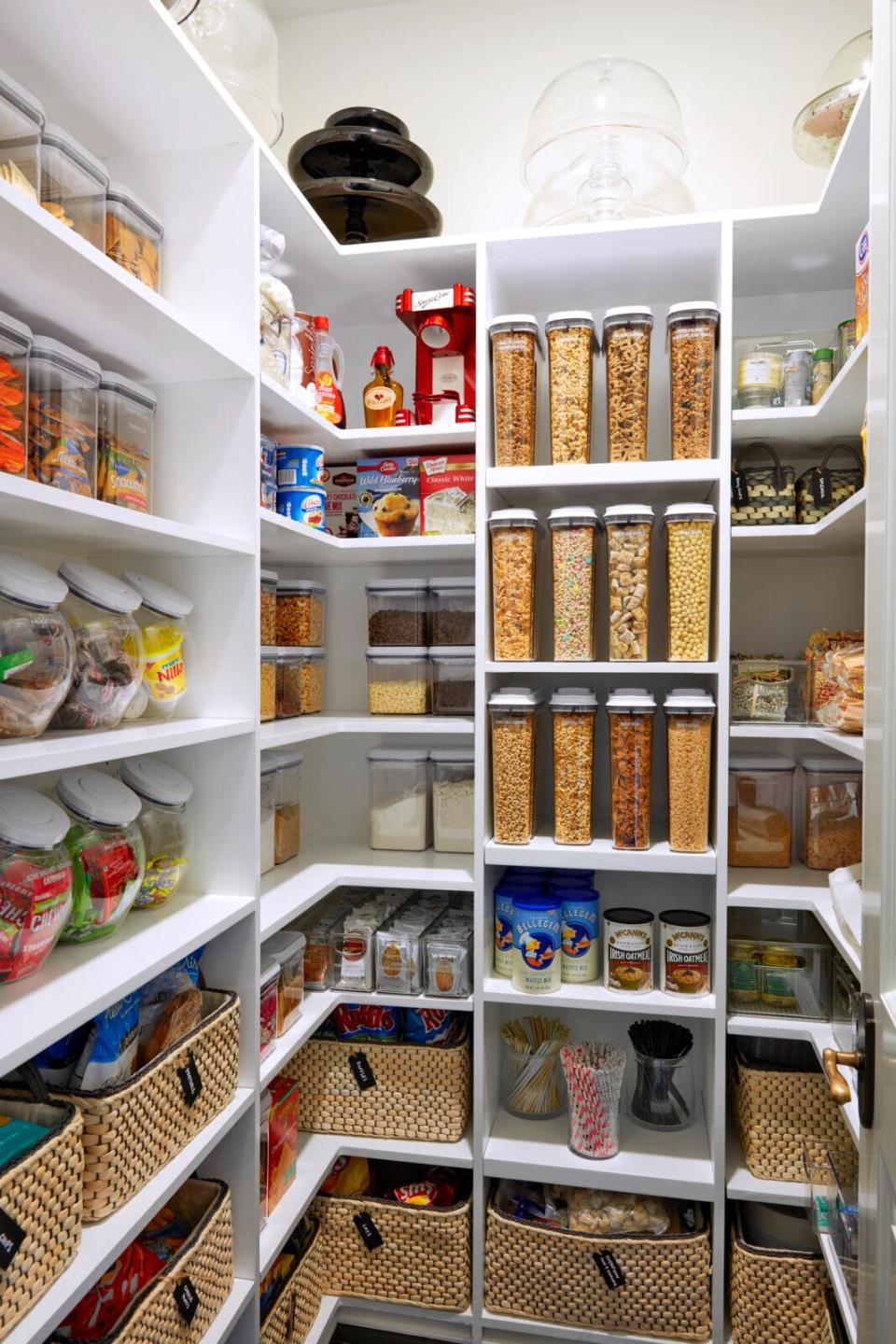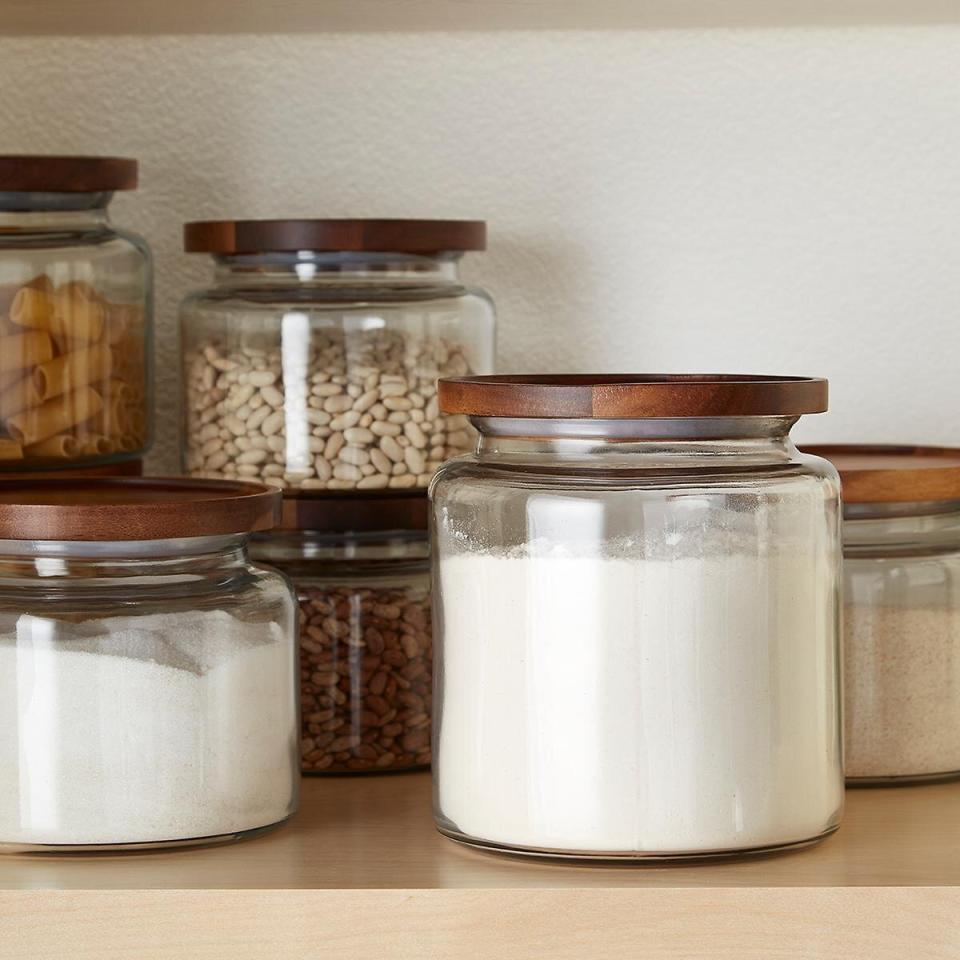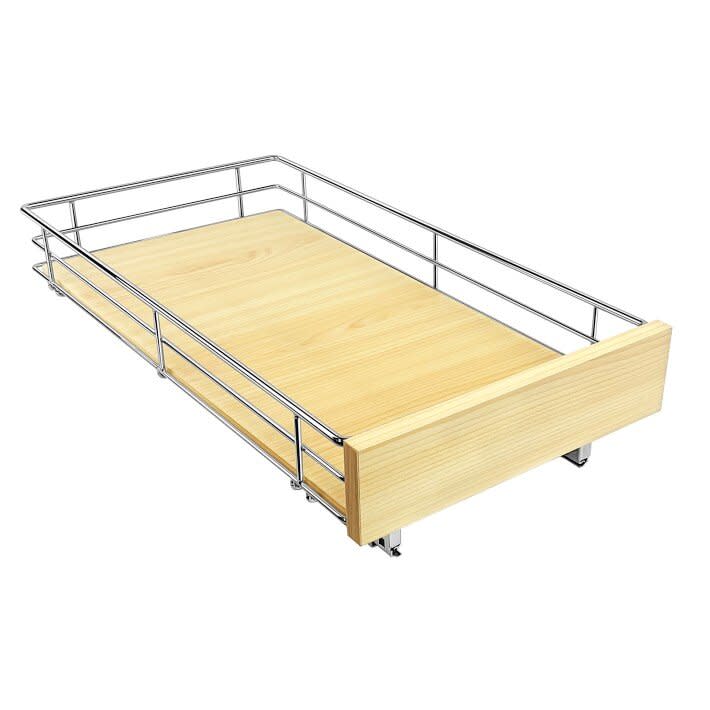The New Rules of Pantry Organization
If finding ingredients in your pantry requires an extensive search, it's time to reorganize. We asked the experts how to systemize a pantry for everyday cooking and extended use. They walked us through the pantry organization process step-by-step. Start by taking stock of what you have stashed, then follow these tips to sort, decant, and stack your way to a tidier pantry. Finding snacks, dinner supplies, and baking essentials just got easier.
RELATED: 5 Kitchen Storage Spots You're Probably Forgetting

Roger Davies/ Otto Archive
Do a big clean-out.
We don't usually think of "decluttering" food, but professional organizer Shira Gill says this is a key step in tidying the pantry, especially to make sure it's stocked with essentials. "Take everything out, and get real about what you're going to cook with," she advises.
Box up any unopened nonperishables and donate them to your local food pantry. Challenge yourself to spend a week incorporating all the little bits left over into soups, stews, pasta dishes, and trail mixes.
(Mostly) disregard expiration dates.
According to the USDA, with the exception of infant formula, expiration dates can largely be ignored. Canned and jarred foods, dried beans, and many sweeteners can last for years. (But discard cans with dents, rust, or swelling.) For things that go rancid more quickly, like oils and whole grain flours, use your nose as a guide, says chef Vivian Howard, author of This Will Make It Taste Good: "As long as it looks good and smells good, it should be fine."
Pour into clear containers.
The experts we spoke to agree that decanting boxes and bags of food into see-through vessels is a must for a well-organized pantry. It saves space, of course—particularly when a package contains almost as much air as food. But you can also quickly see how much you have, making meal planning and grocery list writing easier. As a bonus, it reduces the visual clutter in your pantry. And if you go with airtight containers, decanting will keep your staples fresh longer.

Use a matching collection.
This may feel fussy, but Gill says having uniform vessels "is one of those little things that make a big difference." Your pantry will immediately appear more organized, and you won't have to play 'find the matching lid.' It doesn't have to be expensive. Joe Yonan, author of Cool Beans, uses mason jars and masking tape to manage his dry goods. If there are cooking instructions you want to save, cut off the label and tape it to the container.
Stockpile only what you love.
When you think of filling a pantry for a rainy day, you might think of canned vegetables and tuna. But if your family doesn't enjoy those foods, there's no sense in stocking up on them. "You should have things you like," Yonan says. "Don't put something in your pantry that won't inspire you to cook."
Shop for the space you have.
When trying to figure out how many staples to keep on hand, it's easy to get worked up about preparedness. Some people say you need a week's supply; others say a year's. The short answer: Stock what your storage space allows.
To utilize every inch of space, invest in a slide-out drawer that makes even the back corners of the pantry more accessible.

Designate a spot for extras.
If you prefer to shop in bulk, you'll need a dedicated place for the excess, says Jacqueline Darrow, a design consultant at California Closets. Get a basket or bin, label it "back stock," and place it on an out-of-the-way shelf so it doesn't take up space in your high-traffic area. For purchases like cases of pet food or six-packs of tomato sauce, Gill recommends removing the individual items from their packaging so you can more easily see what you have. And whenever you make your grocery list, check your back stock. You don't want yet another jar of cinnamon or can of chickpeas.
Bring in flavor.
Cooking from the pantry can be a dreary task if you're stuck with just the staples. Howard recommends also stocking flavor boosters. Try pickles, sauerkraut, pesto, jams, and spice blends, like furikake (a Japanese mix that includes seaweed and sesame seeds) and 'everything bagel' seasoning. Homemade versions of many of these boosters are in Howard's book. "These goodies add interest without a lot of extra work," she says. Yonan suggests dried mushrooms, nuts, seeds, dried fruits, and his new favorite condiment, jarred Chinese chili crisp.
Look beyond the kitchen.
When professional organizer Tanisha Porter, owner of Natural Born Organizers, moved to Los Angeles, her kitchen was seriously short on storage space. So she took advantage of an underutilized wall in her dining area. She purchased floor-to-ceiling bookshelves and wicker baskets that fit the shelves, and she used the setup as a pantry. "It was functional, organized, and aesthetically pleasing," she says.
Build maintenance into your routine.
Rotate your stock as you put away groceries, says Marissa Hagmeyer, co-owner of Neat Method. "I take five minutes to decant and bring older items to the front." Yonan recommends rounding up as you cook to avoid remnants: If making two cups of rice means just a half cup remains in the pantry, cook it all now and freeze the extra, rather than leaving little bits.

